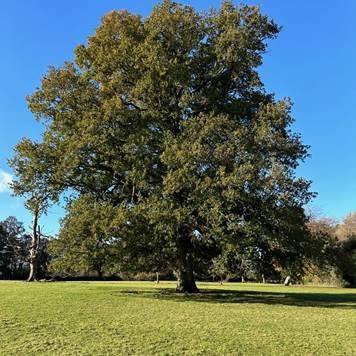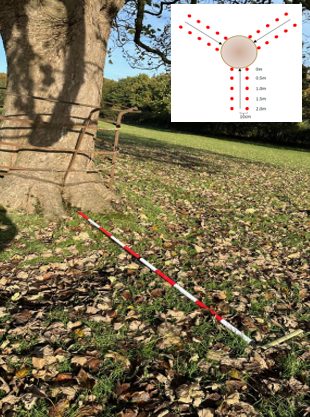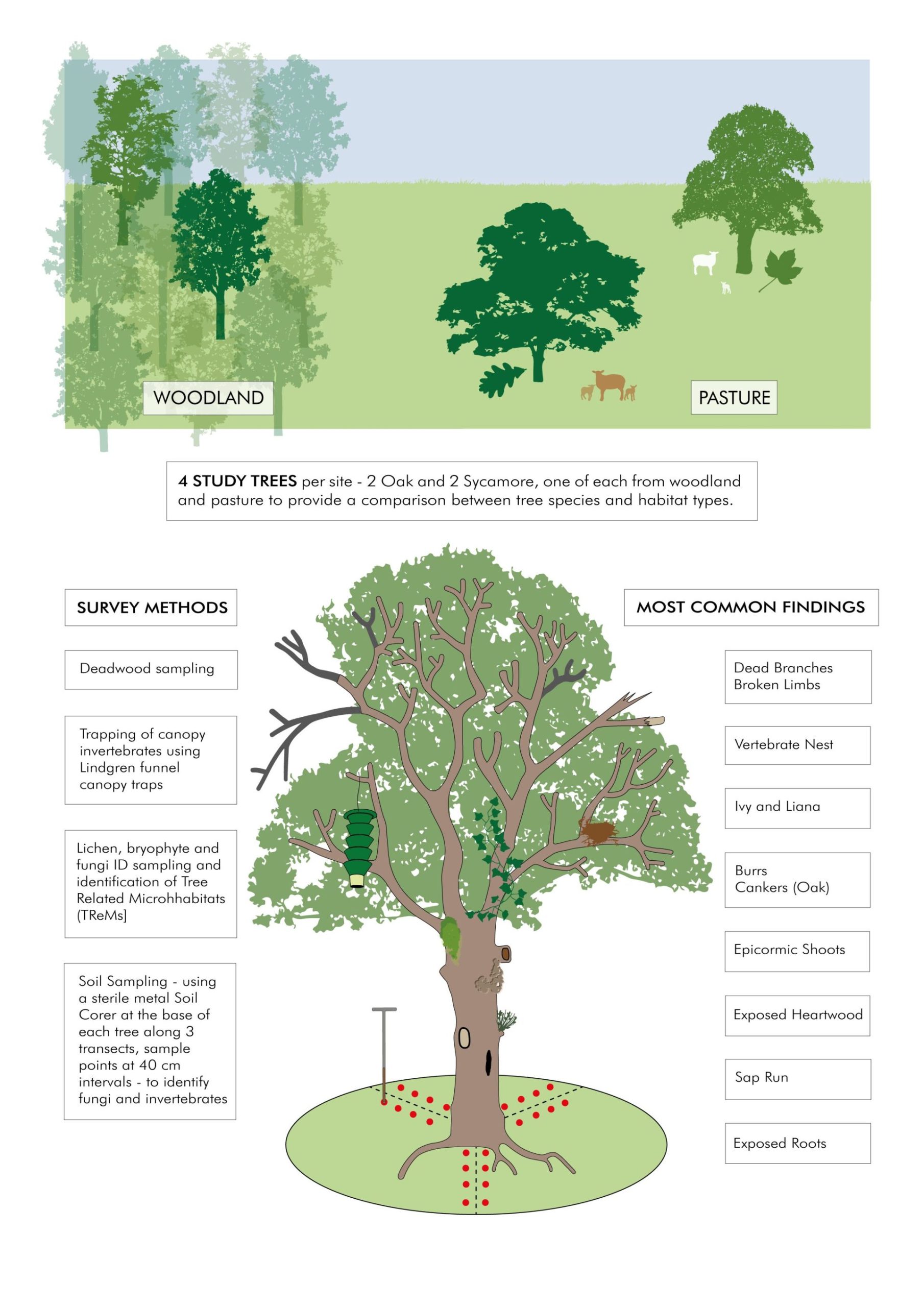Summary
This project aims to enhance our understanding of Trees outside Woodlands (ToW) and their vital role in England’s treescapes.
ToW, which account for approximately 30% of the nation’s woodland, includes small woodlands, tree lines, and isolated trees. Despite their prevalence, their ecological functions have been underexplored due to past challenges in mapping and defining these features.
This project is part of the Nature for Climate Fund.

Research Objectives
- Identify and characterise ToW: We will create detailed maps and analyses to uncover current gaps and predict future changes.
- Examine ecological functions: By investigating how ToW support species movement, biodiversity, and act as refugia, we aim to highlight their importance in fragmented landscapes.
- Develop management strategies: We will trial techniques to accelerate the development of veteran tree features, enhancing biodiversity and bridging gaps in wood-decay habitats.
This comprehensive approach will provide crucial insights for developing effective conservation strategies and policies.

Research Questions
- What is the distribution and composition of ToW at various scales?
- How are ToW configured, and how do they connect the treescape?
- What is the age structure of the current ToW stock?
- Ecological Function of ToW:
- How are ToW used by species colonising new woodlands (e.g., corridors or refugia)?
- What species are associated with ToW as a discrete habitat and what features do these species utilise?
- Enhancing ToW Resources:
- Can we enhance the current ToW resource through targeted management interventions?
Latest Update
Mapping and Resource Identification:
ToW Mapping: Comparative analysis of ToW density and distribution using FR ToW map is complete and draft maps prepared; final map is in development. Methods to compare two different configuration metrics of ToW in the landscape and to measure ToW impact on connectivity complete; final maps in preparation. Modelling features of veteran trees using FR Tow map and Woodland Trust AWVT map ongoing
Ecological Functions and Fieldwork:
Initial investigation of the influence of ToW on the abundance of species within the woodlands that ToW surrounds, has been completed using spatial modelling techniques.
Field sampling supporting a comparison of ToW and woodland interior trees as habitat supporting biodiversity and influencing ecosystem functions ,has been largely completed for the two study species, oak and sycamore. Field sampling has included assessments of canopy arthropods, epiphytic lichen and bryophytes, soil fungi and invertebrates and Tree related Microhabitats (TreMs).
Niche Classification: Ongoing desk-based reviews and field inventories are identifying specialist species and classifying niches provided by ToW.
Restoration and Trials:
Re-assessment of existing veteranisation trials in oak has been completed.
Inoculation trials are underway to accelerate heart-wood decomposition in standing trees.
An investigation of the influence of heart-rot fungi on structuring composition of cavity associated invertebrate assemblages has been initiated.

Funding & Partners
- This project has been funded through the Government's ‘ Nature for Climate Fund’
-
 DEFRA
DEFRA -
Collaborating Partners
-
 Natural England
Natural England -
 University of Stirling
University of Stirling
